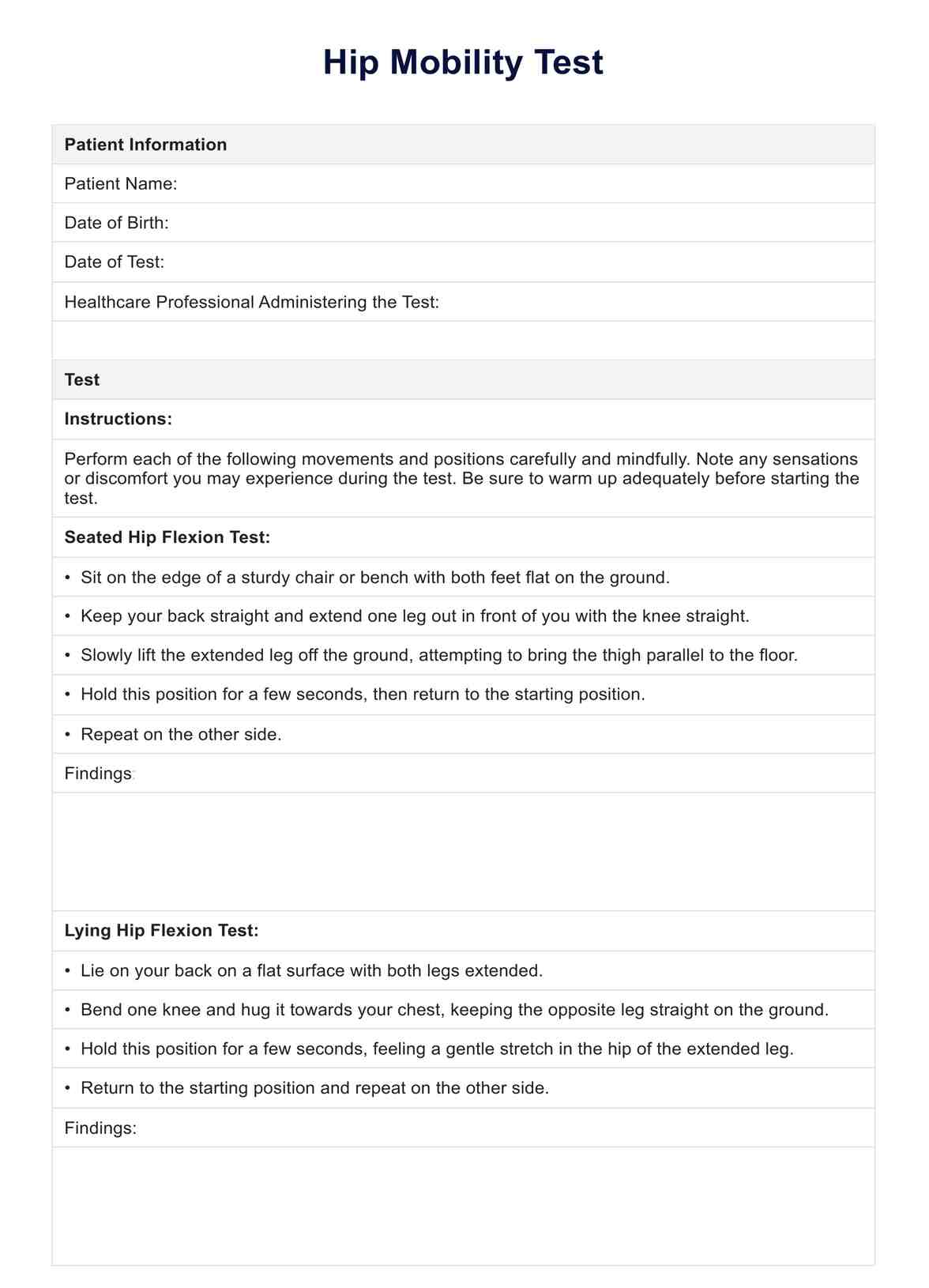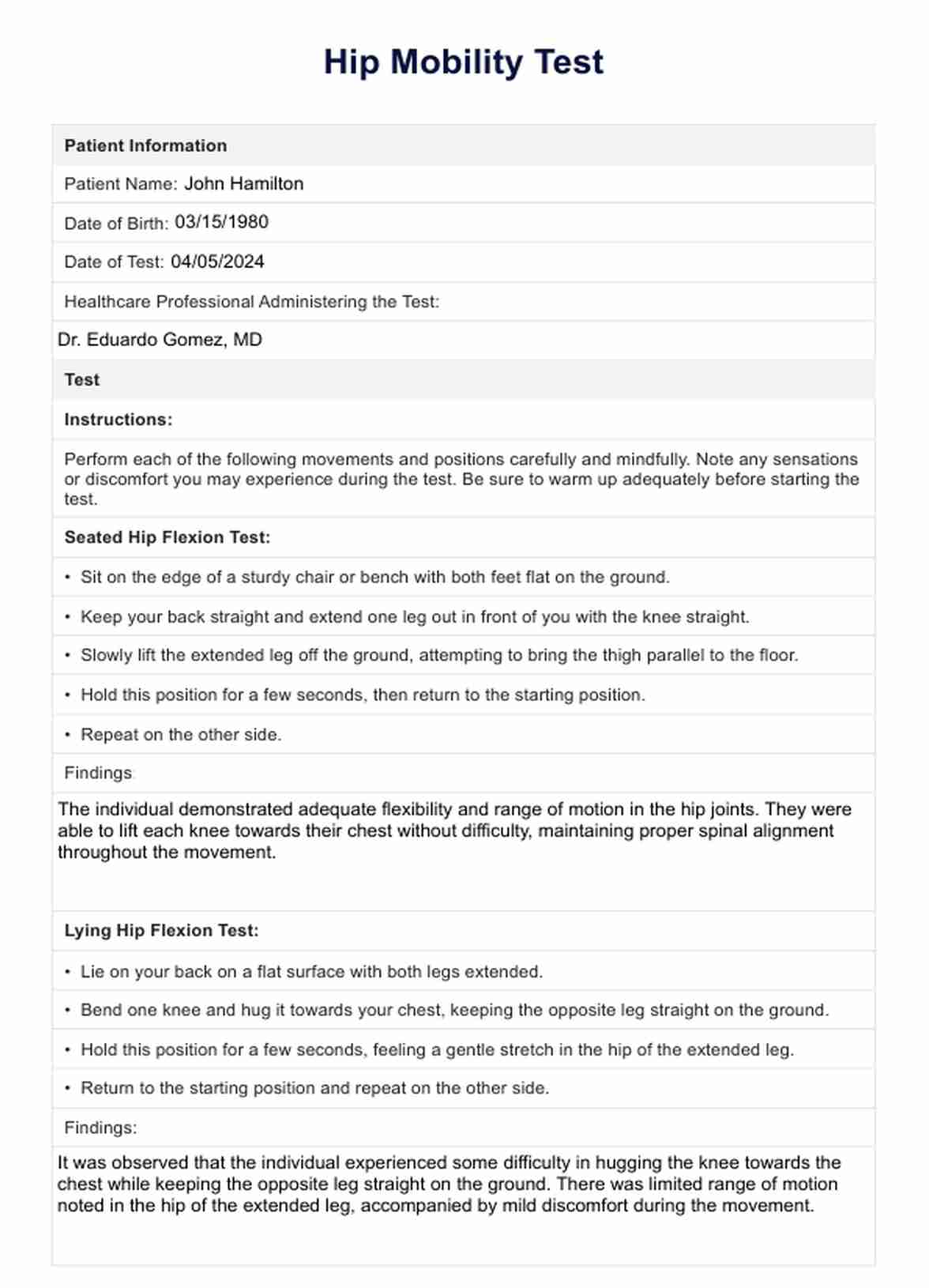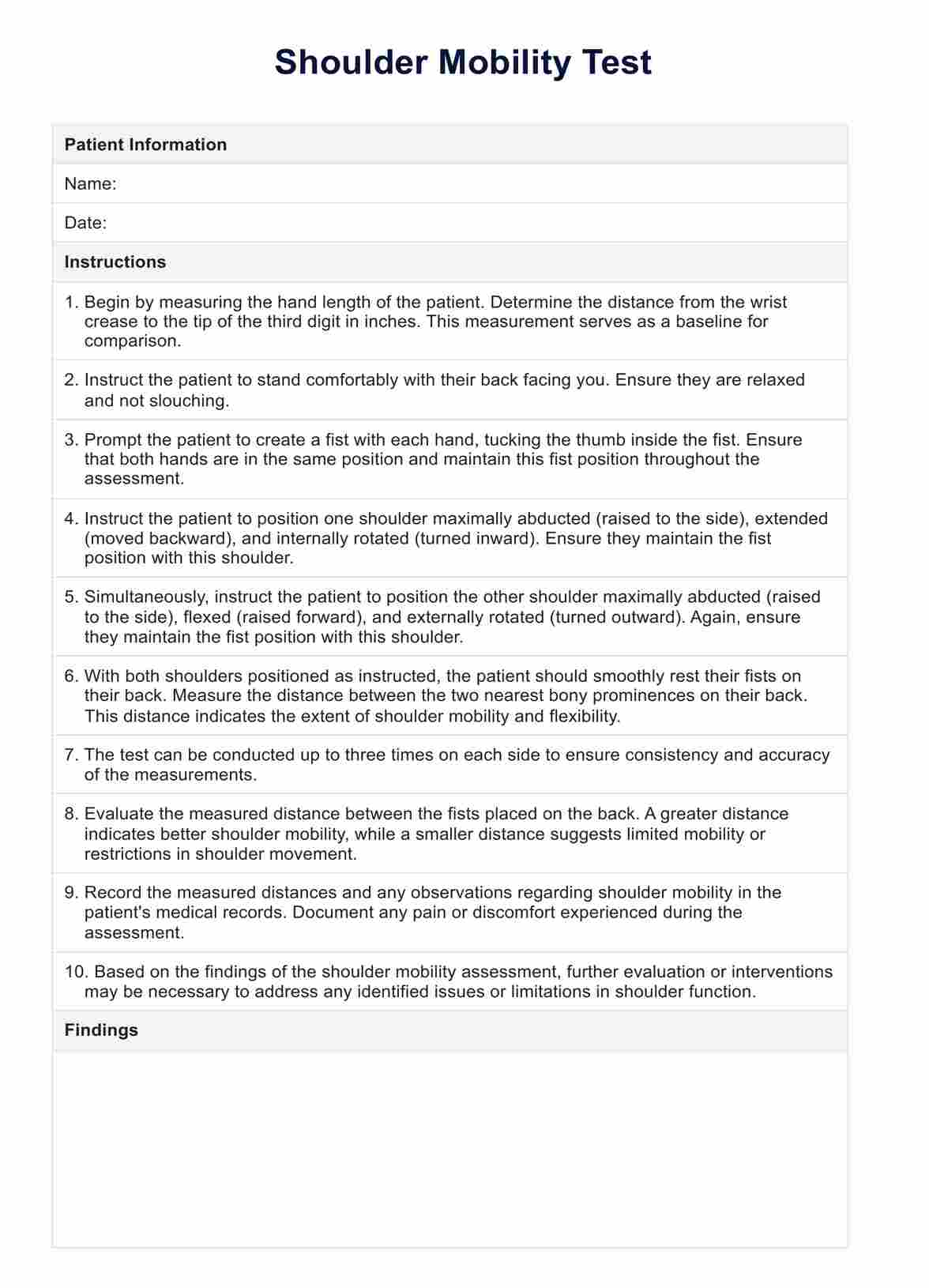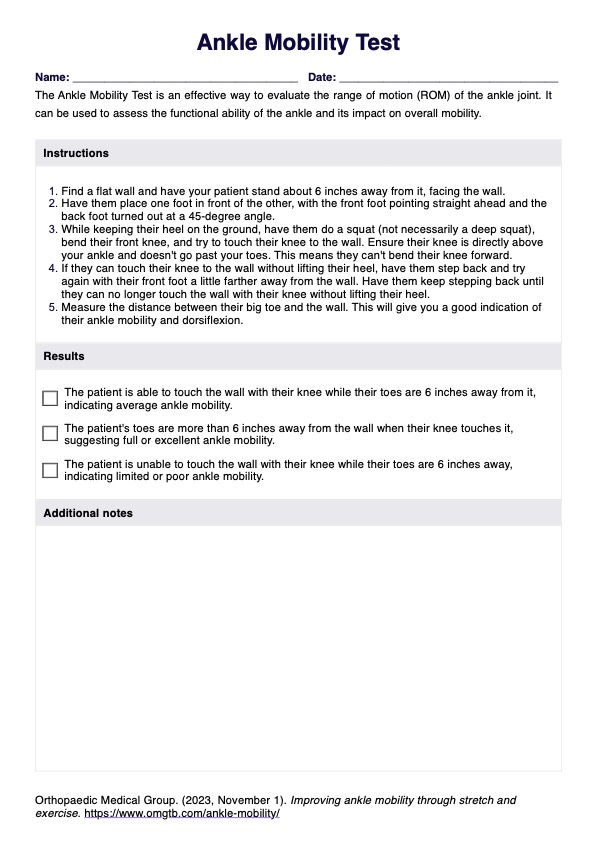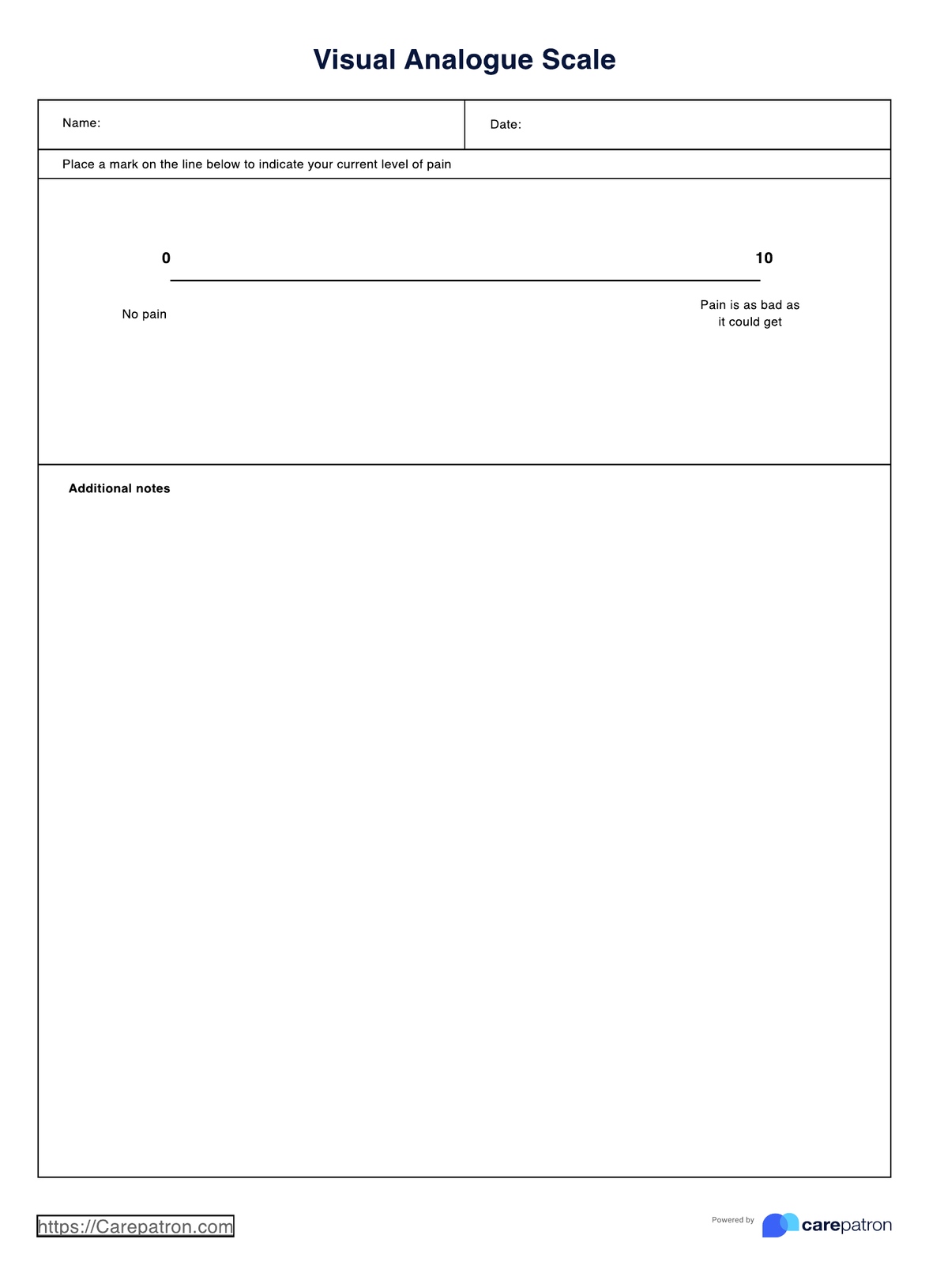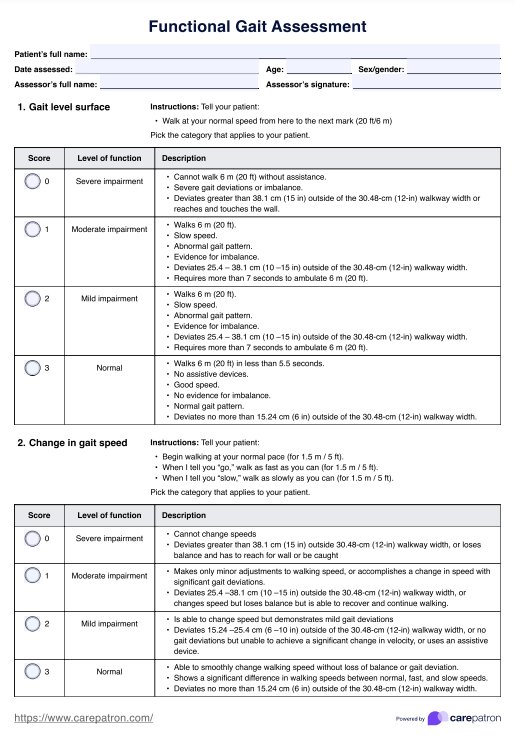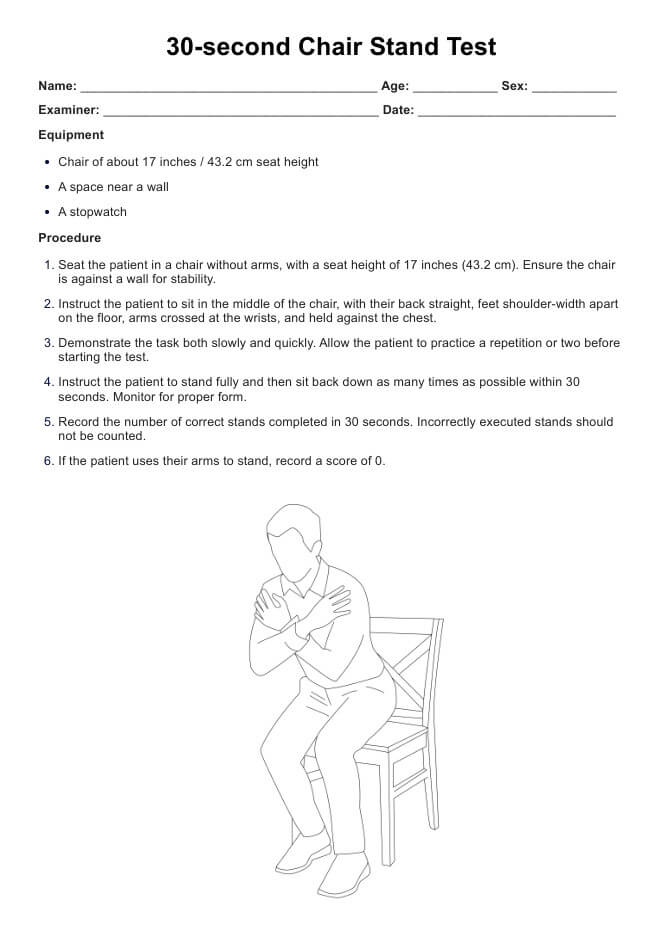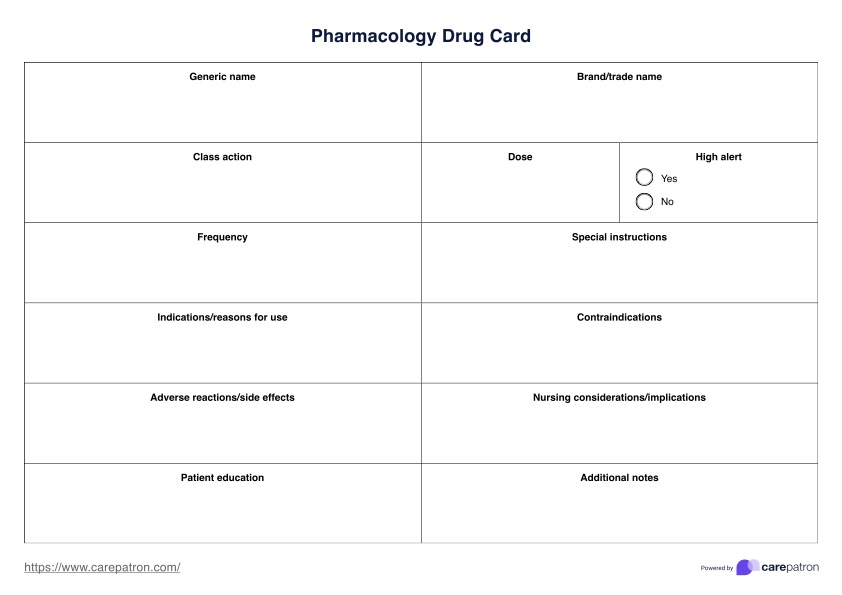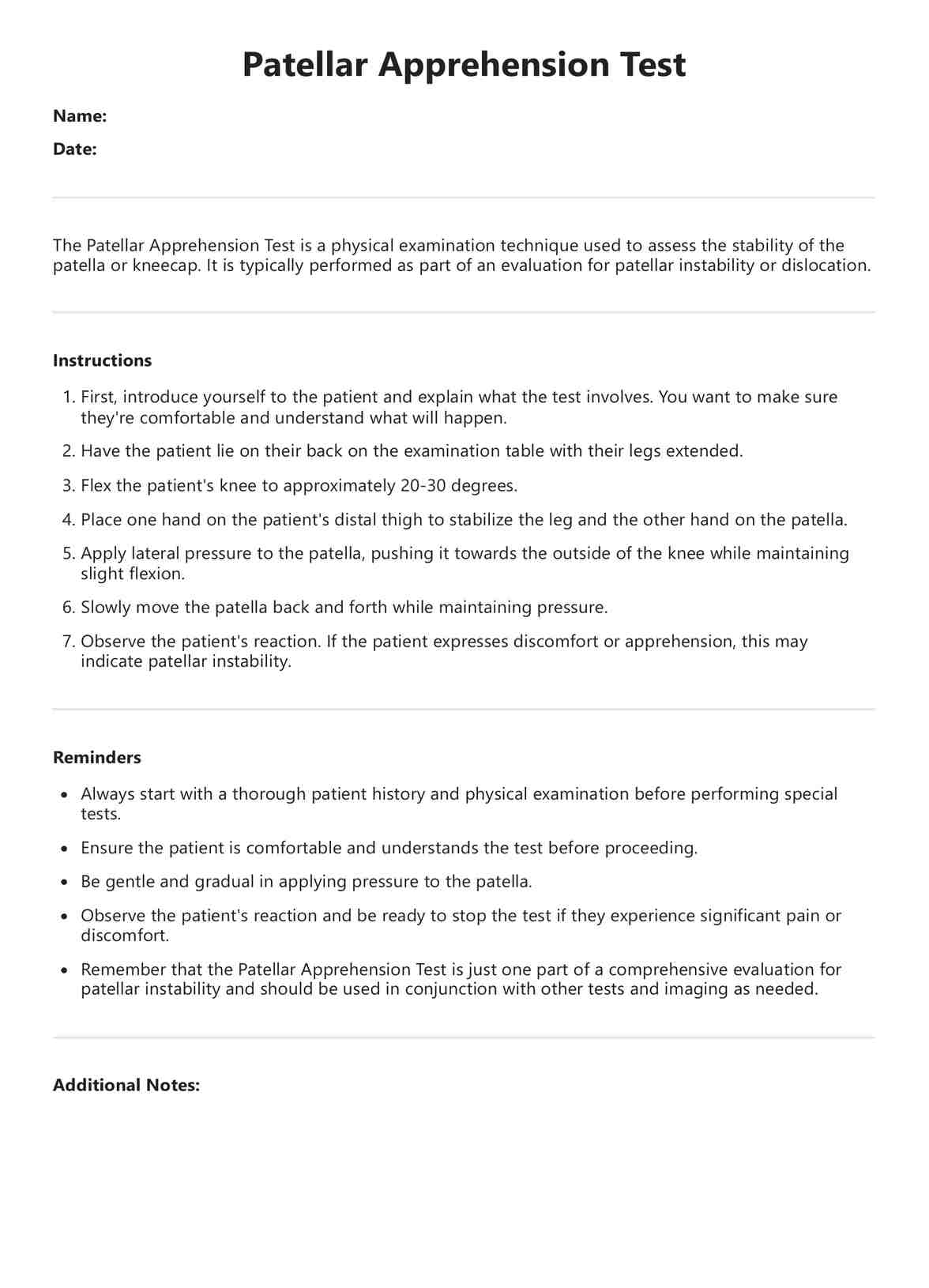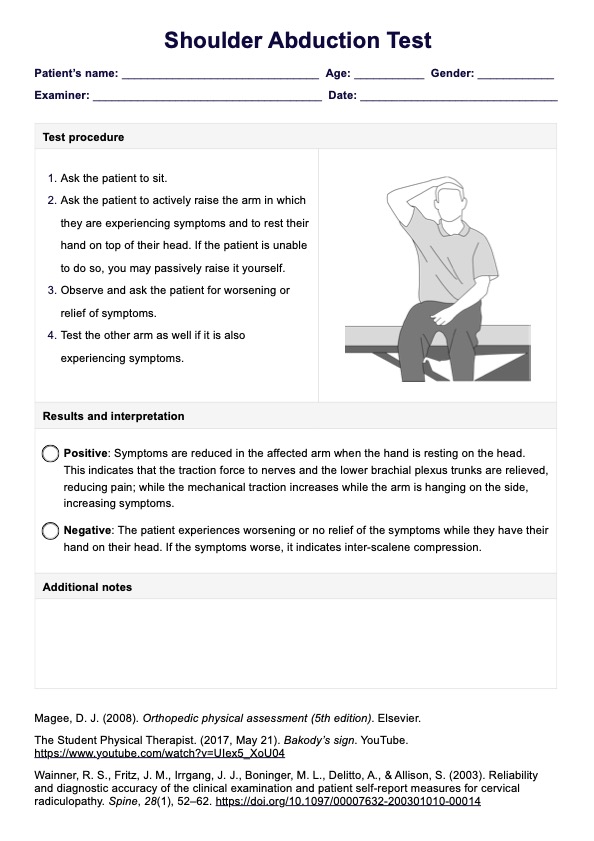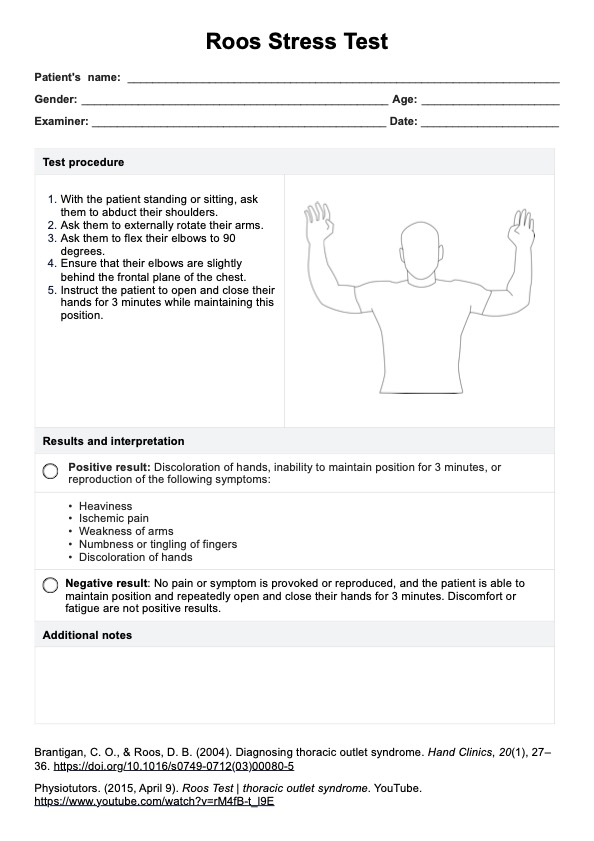Hip Mobility Test
Learn how to assess your hip mobility with a simple test. Download Carepatron's free PDF guide with examples to improve hip flexibility and function.


What is the hip joint?
The hip joint, a critical structure in the human body, facilitates various movements essential for daily activities and physical performance. Situated where the thigh bone (femur) meets the pelvis, the hip joint is a ball-and-socket joint renowned for its stability and versatility. This anatomical marvel allows for various movements, including more hip flexion, extension, abduction, adduction, internal rotation, and external rotation.
At its core, the hip joint comprises the femoral head, resembling a ball, and the acetabulum, forming the socket. These components work in harmony, supported by an intricate network of ligaments, tendons, and muscles, to ensure smooth and controlled movement. Key muscles involved in hip movement include the hip flexors, which are responsible for hip extension, and the hip external rotators and abductors, which facilitate movements such as hip internal rotation and abduction.
Hip flexibility, bringing the thigh closer to the torso, is a fundamental movement pattern governed by the hip flexors. The optimal hip flexion range is vital for walking, running, and squatting. However, factors such as tight hips or hip stiffness can limit the range of hip flexion, leading to movement restrictions and potential injury risk.
Moreover, the hip joint's role extends beyond isolated movement patterns. Its interactions with other joints, muscles, and body segments influence overall movement quality and efficiency. For instance, hip mobility impacts gait mechanics, posture, and lower limb alignment. Additionally, asymmetries in hip movement can affect the opposite leg and contribute to compensatory patterns or imbalances.
What can reduce hip mobility?
Hip mobility can be affected by various factors, including:
- Sedentary lifestyle: Prolonged periods of sitting can lead to tight hip flexors and decreased range of motion in the hip joints.
- Lack of physical activity: Insufficient physical activity or exercise can contribute to stiffness and reduced hip muscle and joint flexibility.
- Muscle imbalances: Weakness or imbalance in the muscles surrounding the joint can impact its stability and mobility.
- Injury or trauma: Past injuries or trauma to the hip, pelvis, or surrounding structures can result in scar tissue formation and decreased mobility.
- Aging: As individuals age, joint tissues may undergo degenerative changes, leading to stiffness and reduced mobility in the joint.
- Poor posture: Incorrect posture, such as excessive anterior pelvic tilt or rounded shoulders, can affect hip alignment and function.
- Tightness in adjacent muscles: Tightness in muscles adjacent to the hip, such as the hamstrings, glutes, or lower back, can restrict hip mobility.
- Overuse: Repetitive movements or overuse of certain hip muscles without adequate rest or recovery can lead to fatigue and reduced mobility.
Hip Mobility Test Template
Hip Mobility Test Example
What is a Hip Mobility Test?
A hip mobility test is a simple assessment designed to evaluate the range of motion and flexibility of the hip joints. It involves a series of movements and positions aimed at determining the extent to which the hip joints can move comfortably and freely. This test can be performed in various ways, with each method targeting specific aspects of hip mobility.
One common hip mobility test involves assessing hip flexion and extension. To perform this test, individuals typically lie on their back with legs extended and attempt to lift one leg off the ground while keeping it straight. Limited hip flexibility may result in difficulty raising the leg beyond a certain point or experiencing discomfort during the movement. Similarly, hip extension can be evaluated by lying face down and lifting one leg off the ground while keeping it straight.
Another method involves testing hip internal and external rotation. Individuals may sit comfortably with legs extended or crossed and attempt to rotate the thigh inward and outward while keeping the opposite knee stable. Limited hip mobility may manifest as restricted movement or discomfort during rotation.
The ability to sit comfortably cross-legged is also indicative of hip mobility. Difficulty sitting in this position or experiencing discomfort may suggest stiff hips and reduced flexibility.
Hip mobility tests are important for assessing functional patterns and identifying areas of limitation or imbalance in the hip joints. Adequate hip mobility is essential for performing everyday activities with ease and efficiency and preventing injury during physical activities. By identifying areas of restricted mobility, individuals can implement targeted exercises and stretches to restore basic range of motion and improve overall hip function.
When and why is this conducted?
The hip mobility test assesses the hip joint's range of motion and flexibility. It is typically performed in various settings, including physical therapy clinics, fitness centers, and sports training facilities. Here's why and when the hip mobility test is conducted:
- Pre-exercise assessment: Before engaging in physical activity or exercise programs, individuals may undergo a hip mobility test to identify any limitations or restrictions that could impact performance or increase the risk of injury.
- Rehabilitation: Following hip injuries or surgeries, rehabilitation programs often include hip mobility testing to monitor progress, identify areas of weakness or stiffness, and guide treatment interventions.
- Movement screening: Hip mobility tests are commonly integrated into movement screening protocols to assess overall movement quality and identify potential biomechanical issues or asymmetries.
- Functional movement assessment: During functional movement assessments, such as the Functional Movement Screen (FMS), hip mobility testing helps evaluate a fundamental movement pattern and detect any deficiencies that may predispose individuals to injury.
- Performance optimization: Athletes and fitness enthusiasts may undergo hip mobility testing as part of performance optimization programs to identify areas for improvement and enhance movement efficiency and power output.
- Pain or discomfort: Individuals experiencing hip pain or discomfort may undergo hip mobility testing to pinpoint the source of their symptoms and develop targeted treatment plans to address underlying issues.
- General wellness: Incorporating hip mobility testing into routine wellness assessments can help individuals maintain optimal joint health, prevent musculoskeletal imbalances, and support overall physical well-being.
How is this test interpreted?
Interpreting the results of a hip mobility test involves analyzing the individual's performance in specific movements and positions to assess the hip joint's range of motion and flexibility.
Here's a brief explanation followed by steps on how the test is interpreted:
- Range of motion assessment: Evaluate the degree of hip flexion, extension, central rotation, and external rotation achieved by the individual during the test.
- Comparison to normative values: Compare the individual's performance to established normative values or basic range for hip mobility to determine if it falls within the expected parameters.
- Identify restrictions or limitations: Identify any restrictions or limitations in hip mobility, such as reduced range of motion, discomfort, or compensatory movements.
- Assess bilateral symmetry: Evaluate bilateral symmetry by comparing hip mobility on the left and right sides, noting any differences or asymmetries that may indicate underlying issues.
- Consider functional implications: Consider the functional consequences of the observed hip mobility limitations, such as how they may affect daily activities, exercise performance, or risk of injury.
- Correlation with symptoms: If applicable, correlate the findings of the hip mobility test with any symptoms reported by the individual, such as hip pain or discomfort, to help guide further assessment and treatment.
- Integration with clinical findings: Integrate the results of the hip mobility test with other clinical findings, such as physical examination findings or diagnostic imaging results, to develop a comprehensive understanding of the individual's hip function.
How does our Hip Mobility Test template work?
Carepatron's Hip Mobility Test template is a user-friendly tool designed to assess hip flexibility and range of motion. It is designed to streamline the process of assessing hip flexibility and range of motion for healthcare professionals. Here's how it works:
1. Access the template
Healthcare professionals can access the Hip Mobility Test template through our platform's dashboard or designated section for assessments.
2. Administer the test
Administer the hip mobility test to the patient according to the standardized protocol outlined in the template. Provide clear instructions and guidance to ensure accurate performance of each test.
3. Record results
Record the results of each test directly within the template. This allows for easy documentation and tracking of the patient's progress over time.
4. Interpretation and analysis
Analyze the results of the hip mobility test to identify any limitations or restrictions in hip mobility. Interpret the findings in conjunction with other clinical information to guide treatment planning and intervention.
5. Develop treatment plan
Based on the results of the hip mobility test, develop a personalized treatment plan tailored to address the patient's specific needs and goals. This may include targeted exercises, manual therapy techniques, or lifestyle modifications.
6. Monitor progress
Use the template to monitor the patient's progress throughout the course of treatment. Regularly re-administer the hip mobility test to track improvements and adjust the treatment plan as necessary.
Benefits of a Hip Mobility Test?
A hip mobility test offers numerous benefits for individuals seeking to optimize their patterns, prevent injury, and enhance overall physical performance. Here are some key benefits:
Early detection of imbalances
Individuals can identify asymmetries or imbalances between the left and right hips by assessing hip mobility. Early detection of these discrepancies allows for targeted interventions to address weaknesses and prevent potential injury.
Injury prevention
Optimal hip mobility is crucial for proper biomechanics during physical activities. Individuals can implement corrective exercises to reduce the risk of injuries such as hip impingement, strains, or low back pain by identifying limitations or restrictions in hip mobility.
Improved posture and movement patterns
Restricted hip mobility can contribute to poor posture and compensatory patterns. By addressing limitations in hip mobility, individuals can improve their posture and movement efficiency, reducing strain on joints and muscles.
Enhanced performance
Adequate hip mobility is essential for performing functional movements with ease and efficiency. Athletes and fitness enthusiasts can benefit from improved hip mobility, which may lead to enhanced athletic performance and increased power generation during activities like running, jumping, and lifting.
Supportive of a healthy lifestyle
Incorporating hip mobility testing into a self-care routine promotes overall musculoskeletal health and well-being. It encourages individuals to take proactive steps to maintain joint health and prevent the adverse effects of longer sitting and sedentary lifestyles.
Tailored rehabilitation programs
Individuals recovering from hip injuries or surgeries can benefit from hip mobility testing as part of their rehabilitation process. Physical therapists can use the results to design customized rehabilitation programs that focus on restoring basic range of motion and improving hip function.
Personalized exercise prescription
Unlike strength training, which primarily targets muscle strength, hip mobility testing helps identify specific areas of restriction or weakness in the hip joint. This allows for prescribing exercises that address mobility deficits and promote overall joint health.
Hip mobility treatment
Hip mobility treatment encompasses a range of interventions aimed at improving flexibility, range of motion, and overall function of the hip joint. Here are some types of treatment commonly used:
Stretching exercises
Stretching exercises target tight hips and surrounding muscles to improve flexibility and range of motion. Common stretches include hip flexor stretches, piriformis stretches, and hamstring stretches. These exercises help alleviate tension and restore normal mobility to the hip joint.
Strengthening exercises
Unlike strength training, which primarily focuses on muscle strength, strengthening exercises for hip mobility target specific muscles involved in hip movement. These exercises help stabilize the hip joint and support proper alignment, reducing the risk of injury and improving overall function.
Manual therapy
Physical therapists may use manual therapy techniques such as joint mobilization and soft tissue manipulation to address restrictions in hip mobility. These hands-on techniques help release tightness, improve joint mobility, and restore normal patterns.
Corrective exercises
Such exercises are tailored to address specific movement dysfunctions or imbalances identified during hip mobility testing. These exercises focus on improving motor control, proprioception, and muscle activation patterns to optimize hip function.
Activity modification
Prolonged sitting and sedentary lifestyles can contribute to tight hips and restricted mobility. Activity modification involves making lifestyle changes to reduce longer sitting and incorporate more movement into daily routines. This may include taking frequent breaks to stretch, using standing desks, or participating in low-impact activities such as walking or swimming.
Self-care routine
Individuals can incorporate self-care practices into their daily routine to improve hip mobility and prevent stiffness. This may include performing daily stretches, using foam rollers or massage balls to release tight muscles, and practicing good posture and body mechanics.
Consultation with a medical professional
If conservative treatments are ineffective or if hip mobility issues persist, consulting with a medical professional or physical therapist may be necessary. They can provide a comprehensive assessment of hip function, recommend appropriate treatment options, and, if required, refer individuals to specialists for further evaluation or intervention.
Commonly asked questions
You may have poor hip mobility if you experience difficulty performing basic movements such as squatting or bending, feel tightness or discomfort in the hips during activities, or notice a limited range of motion in hip joints.
Using specific tests and measurements, hip mobility is measured by assessing the range of motion in various hip movements, such as flexion, extension, abduction, adduction, internal rotation, and external rotation.
To check hip flexor mobility, perform a hip flexor stretch by kneeling on one knee and leaning forward while keeping the opposite leg straight and the foot flat on the ground. Your hip flexor mobility is likely adequate if you feel a stretch in the front of the hip and thigh.


